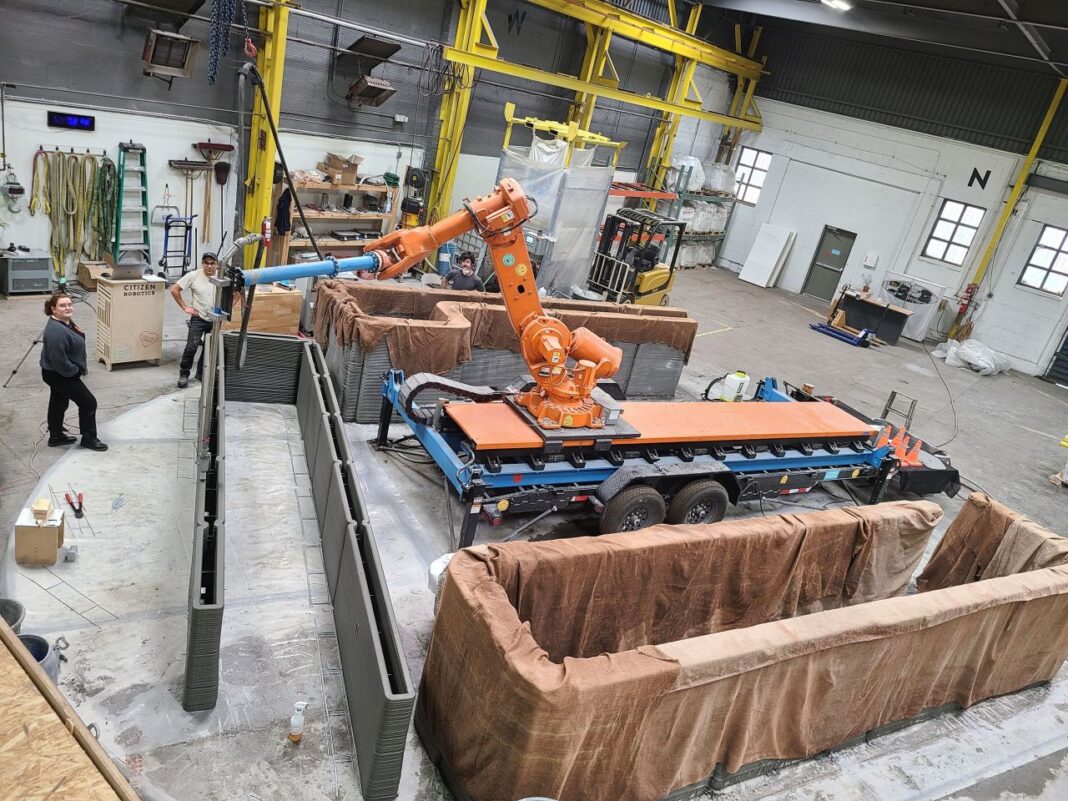Timber construction is amongst the industries most impacted by the push towards AI and automation.
According to a report published by Goldman Sachs, the construction industry has 20% exposure to automation and AI replacement – including 3D printing and robotics.
Now, a Detroit architect and Citizen Robotics have joined forces to create a 3D-printed home, which they hope can be scaled up to produce quick, cost-effective, high-volume housing.
Debuting at the Month of Design, the 300-square-metre cottage “reimagines the traditional stick-built construction system’ in what Citizen Robotics said “could be the future for affordable housing.”
The walls include a demountable timber frame, which can removed after the walls are tested for load-bearing capacity, with the roof featuring sustainable foam panels and mass timber products.
The house was designed and conceptualised in less than a week!
It took five days to print the house with a robot, refurbished from an automotive factory, assembling the house on site in less than 48 hours.
It costs “slightly” more to build than a conventional house, but Citizen Robotics hopes to match or beat the price of stick-built homes on a per square metre basis.
According to the father and daughter team, Tom and Evelyn Woodman, Citizen Robotics aims to reduce construction’s up-front costs “to improve thermal efficiency so owners can save on heating.”
“We use all off-the-shelf components for our setup because we want this to be super replicable. According to Evelyn Woodman, ” nothing is proprietary,” not even the concrete mix.

“And in the Midwest, there’s a huge market for these used robots. Once automotive companies have used them for nine years, they usually just throw them out.”
For the architect Bryan Cook, the prototype provides an opening for former automotive workers to work alongside robots in highly skilled tech nobs.
“Being Black architects, we’re usually getting the technology last, so I was incredibly excited to be at the forefront of something new with huge potential.”
3D-printed homes are gaining traction around the world
Construction increasingly deploys AI and robots to develop 3D and even 4D prefabricated construction materials.
New research suggests that automation could lead to a 50% reduction in material consumption, a 63% reduction in emissions and 75% in time-saving.
In Austin, Icon has been using robotics since 2018, and in November last year, it began construction with builder Lennar on a 100-unit neighbourhood, which would be the largest such community in North America.

Last year, Serendix printed a house in less than 24 hours. The Japanese startup — looking to more than triple its building capability to 850 homes by next year — recently erected a 538-square-foot house for $37,600, according to Fast Company.
The Citizen Robotics house “will be sold at a price aligned with the neighbourhood’s median income of $49,700.”
“Citizen Robotics’ mission is to try to disrupt [the homebuilding] industry,” according to Cook, principal and founder of Develop Architecture.
“They want to become a potential replacement for traditional stick-built construction.
“If we can do this not only efficiently but effectively, 3D printing will bring stability, sustainability, and great design to the housing industry,” Mr Cook said.






